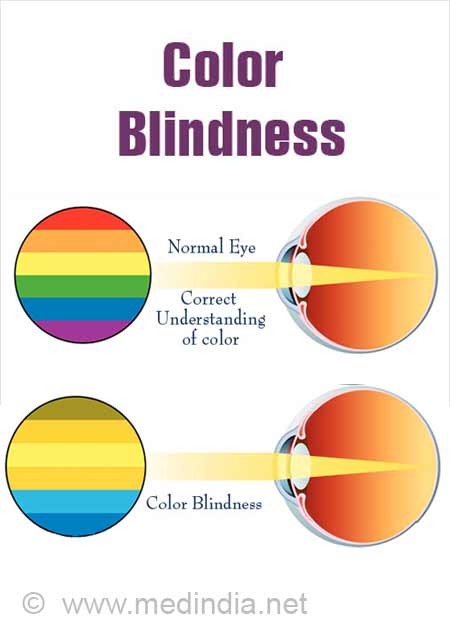ForumIAS announcing GS Foundation Program for UPSC CSE 2025-26 from 19 April. Click Here for more information.
ForumIAS Answer Writing Focus Group (AWFG) for Mains 2024 commencing from 24th June 2024. The Entrance Test for the program will be held on 28th April 2024 at 9 AM. To know more about the program visit: https://forumias.com/blog/awfg2024
What is the News?
The Supreme Court has directed the Film and Television Institute of India(FTII) not to exclude candidates suffering from colour blindness from its courses on filmmaking and editing and asked it to make changes to its curriculum instead.
What is Colour Blindness?

Colour blindness, also known as a colour deficiency, is the inability to see colours in the normal way.
Colour-blind individuals often cannot distinguish between certain colours — usually greens and reds and sometimes blues as well.
The mechanism behind Colour Blindness
In the retina, there are two types of cells that detect light. They are:
Rods Cells: It detects only light and dark and is very sensitive to low light levels.
Cone cells: It detects colour and is concentrated at the center of human vision. There are three types of cones that see color: red, green and blue. The brain uses input from these cone cells to determine the color perception.
– Color blindness can happen when one or more of the color cone cells are absent, not working, or detect a different colour than normal.
What are the causes of Colour Blindness?
Congenital Colour Blindness: Most colour blind people are born with the condition (congenital colour blindness). Congenital colour vision deficiencies are usually passed on genetically.
Medical Conditions: A problem with the colour vision that arises later in life could be the result of disease, trauma, or ingested toxins. If colour blindness arises out of disease, one eye may be affected differently from the other, and the difficulty could worsen over time.
– Medical conditions that may increase the risk of getting colour blindness include glaucoma, diabetes, Alzheimer’s, Parkinson’s, alcoholism, leukaemia and sickle-cell anaemia.
Vulnerable Gender: Men suffer from a higher incidence of colour blindness than women. Around the world, every tenth male is estimated to have some form of colour deficiency. Men of Northern European descent are considered to be especially vulnerable.
Treatment: Colour blindness cannot as yet be treated or reversed. However, it can be corrected to some extent by wearing special contact lenses or colour filter glasses. There is some research that suggests gene replacement therapy can help modify the condition.
Steps Taken by Government of India: In 2020, the Ministry of Road Transport and Highways amended the Central Motor Vehicles Rules 1989 to enable citizens with mild to medium colour blindness to obtain a driver’s licence.
Source: This post is based on the article “Explained: What is colour blindness, and can you get it later in life?” published in Indian Express on 13th April 2022.




